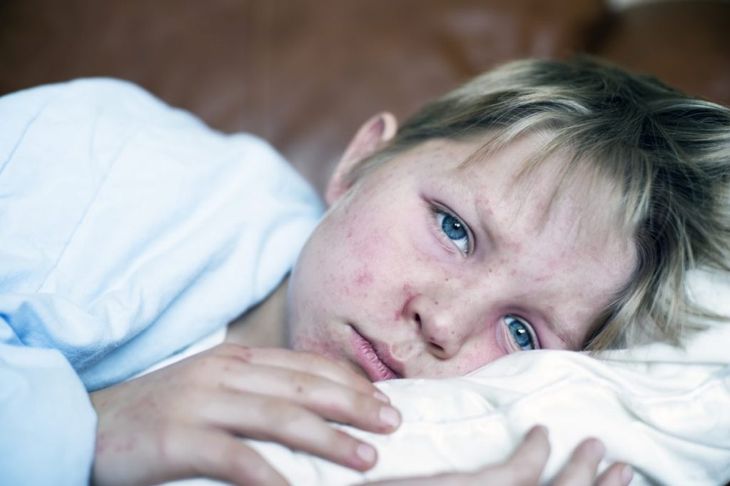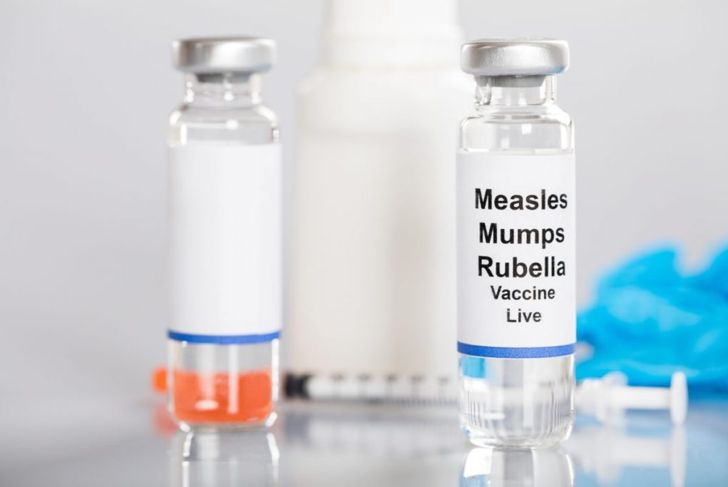Rubella, or German measles, is a viral infection that causes a distinctive red rash. While similar to measles, a different virus causes rubella, one that is usually not as infectious or as severe as the measles. In the United States, most children are given the measles-mumps-rubella or MMR vaccine twice before they start school. Because of this, rubella is very rare in America. However, unvaccinated adults that were not born in the U.S. or infants who are not yet vaccinated are at risk of getting rubella.
The Virus and How it Spreads
Togaviridae Rubivirus is the single-stranded RNA virus that causes rubella. It passes from person to person through coughs or sneezes or direct contact with respiratory secretions such as mucus. Infection can occur through droplets in the air or sharing food and drinks with an infected individual. While vaccines have almost eliminated rubella in the United States, cases still occur, especially in adults born in other countries who were not vaccinated as children.
Pregnancy and Rubella
If you have not been vaccinated and contract rubella during your pregnancy, your unborn child is also exposed to the virus, because blood can transmit it. Infants born to mothers who had rubella during pregnancy are at risk of congenital rubella syndrome, which carries symptoms low birth weight and size, heart problems, loss of hearing, loss of eyesight, damage to the liver or spleen, congenital or intellectual disabilities, and death. Doctors cannot administer vaccines to pregnant women, so anyone unvaccinated should take care to avoid unwell individuals while pregnant.
A Long Contagious Period
After the rubella virus infects someone, symptoms can 14 to 23 days to surface; this means a person is contagious for two to three weeks before they know they have the virus. In addition, infected people can remain contagious up to two weeks after the rash clears up.
Before Vaccinations
The last major outbreak of rubella in the United States occurred between 1964 and 1965. Before the vaccine became available in 1969, rubella was a common condition, especially among children between five and nine years old. The bigger concern was the cases of congenital rubella syndrome. It was also a cause of an increased rate of miscarriage.
The Rubella Vaccination
Rubella is part of the measles-mumps-rubella (MMR) vaccine that is given to children twice, the first time between the ages of 12 and 15 months, and then again between four and six years. Unfortunately, cases of infec do still happen and leave infants and unvaccinated adults at risk. Vaccinations are the only way to prevent a case of rubella.
Do You Need the MMR Vaccine?
If you received the MMR vaccine as a child, have had a positive rubella immunity test, or were born before 1957, you do not need to be vaccinated. If you do not fit that criteria and you are attending college, work in a medical facility, plan to travel overseas, or are a nonpregnant woman of childbearing years, you should receive the vaccine as a preventative measure.
Symptoms of Rubella
The red rash of rubella is the most noticeable symptom. It typically starts on the face and spreads down the body, causing itching and lasting about three days. Before the rash appears, infected individuals may experience a mild fever or swollen and tender lymph nodes in the neck or behind the ears. Other symptoms include a headache, sore throat, loss of appetite, swollen eyes, a stuffy or runny nose, and stiffness and swelling in the joints.
Complications of Rubella
While symptoms in most cases are mild, rubella can cause more severe complications such as arthritis in the fingers, wrists, and knees that can last after the infection clears. In very rare cases, rubella can cause severe ear infections, inflammation of the brain, and encephalitis.
Diagnosing Rubella
Because many viral rashes look similar, a virus culture will enable the doctor to positively identify rubella. He can also do a blood test that looks for rubella antibodies in the blood. The blood test is not always a clear sign of current infection because the presence of antibodies can indicate, in addition to a current infection, a recent infection, one in the past, or receipt of the rubella vaccine.
Treatment of Rubella
In most cases of rubella, no treatment is necessary — the virus will usually clear up on its own. Pregnant women with rubella require antibodies to fight the infection. Prompt treatment will help reduce the symptoms but not eliminate the chance of a newborn developing congenital rubella syndrome. Babies born with the syndrome require special medical care and specialists.

 Home
Home Health
Health Diet & Nutrition
Diet & Nutrition Living Well
Living Well More
More




















